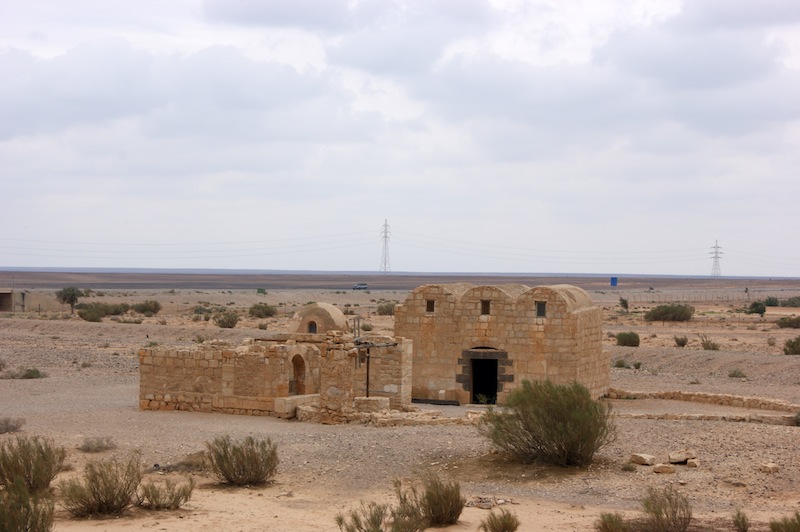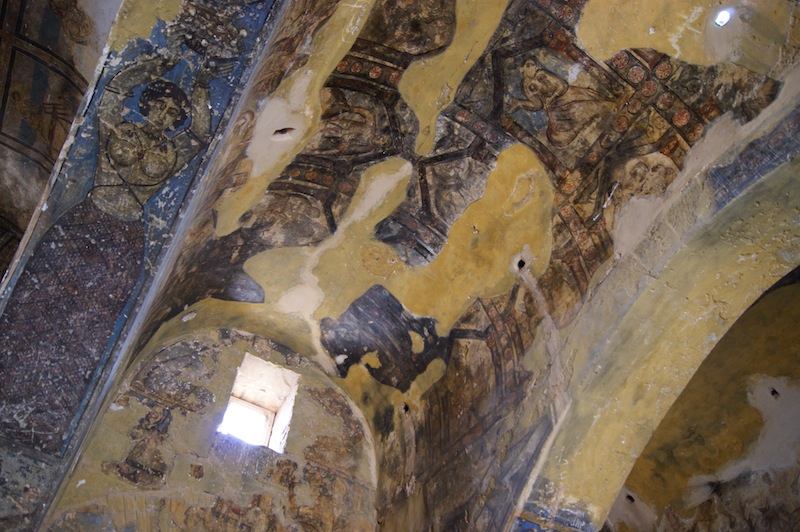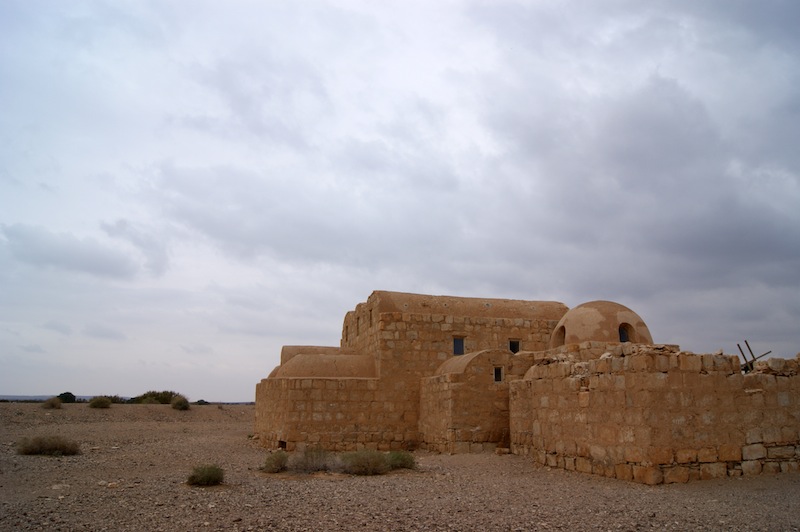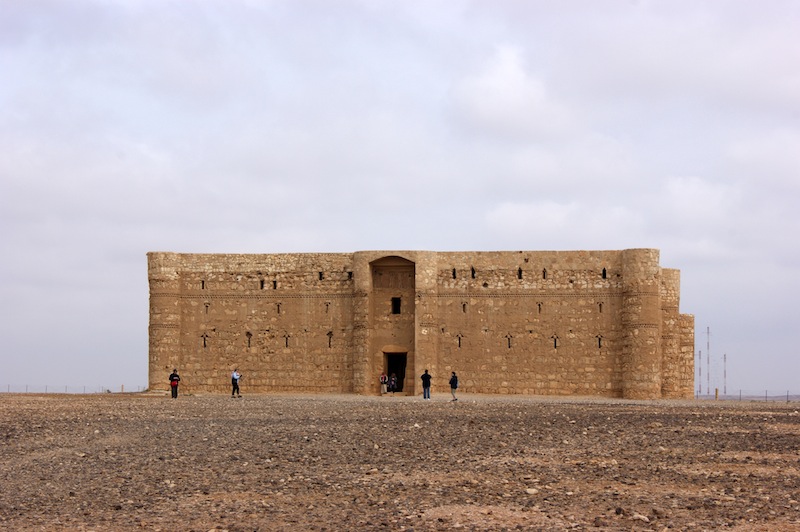On our two-week visit to Jordan, we took a tour of the Desert Castles that lie on the arid plains to the east of the capital, Amman.
The weather was bleak as we hit the highway out of the city, fresh from a night in the swanky Marriott hotel. There, I’d settled into the bar and eaten a hearty dinner while Graham curled up in bed, nursed a stomach bug and sipped water. During the day we’d had just enough time in our busy week-long itinerary to tour busy Amman’s historic citadel, considered to be one of the world’s oldest continuously inhabited places. Today it’s a jumble of antiquities, mainly dating from the Roman, Byzantine and Umayyad periods, and includes the remains of a Temple to Hercules, a palace and church.
Beyond the sprawling city’s limits and hills, to the east, the landscape is flatter. The desert of sand and basalt fans out in all directions and subtly changes colour, throwing up yellows and oranges, browns and blacks. Dusty and busy with trucks rolling on to Iraq and Saudi Arabia, Highway 40 will never rank as one of the world’s great drives. Pylons march across the landscape, carrying power to the settlements beyond the capital, and roadside cafes offer lorry drivers a break from the tedium.
It made me wonder why anyone would choose to live out there, but they did and still do. Remains of prehistoric peoples have been found throughout the region, but it’s the Desert Castles that stand out as lasting symbols of the human conquest of these apparently dead lands. In truth, they’re not so much castles as palaces, hunting lodges, trading centres, caravan stations, baths, places of rest and recreation – the roadside cafes of their day perhaps.
They were built more than 1,200 years ago by the powerful Umayyad caliphs from Damascus, but were later taken over by the all-conquering Abbasids of Baghdad. The castles reveal early Muslim art and architecture and are the survivors of what was probably a chain of such buildings across the region, built beside oases that provided much-needed water for travellers.
We visited three of them. Qasr Amra is a UNESCO World Heritage Site, among the best preserved and most intimate of the desert castles, famous for its colourful frescoes and mosaics. Built in the early years of the 8th century with its own water supply, a luxury bath house remains from the complex along with a well. It has three long halls with vaulted ceilings decorated with frescoes that are decidedly risque by Muslim standards, including one of the caliph on his throne and others featuring other notable rulers of the world. Animals are also represented. This is odd because Islam forbids the illustration of living beings. Some suggest that out in the desert, the caliphs felt free to ignore some of the basic tenets of their religion. The building has an audience chamber, which was probably used for meals and meetings, along with the baths complex. The steam room has a fine fresco featuring a map of the heavens while other rooms have some notable mosaics.
Qasr al-Harraneh (or Qasr Kharana) is a few miles down the road near an unfortunate jumble of unsightly pylons. Much restored, it looks like a real castle and is certainly the most visually impressive of the tour’s historic sites.
It’s a squat, square building with corner towers and occasional arrow slits. At first glance it looks impregnable, defying any challengers to its might. But many argue that it could never have been a proper fort – neither the corner towers nor the arrow slits could be used by soldiers to defend the building. Some historians argue that it was more likely a caravanserais or a place of retreat for rulers, others that it was a meeting place for VIPs. Greek inscriptions suggest it was built on the site of a Roman or Byzantine building in around 711. Inside, we could easily imagine that the rooms and courtyards would’ve been an attractive retreat from the harsh desert beyond.
While many of the desert castles reflect the oranges, yellows and browns of the desert landscape, the formidable Qasr al-Azraq is an intimidating black basalt fortress, entered through a huge, hinged slab of granite. Archaeologists reckon there’s been a castle on the site since about 300AD – when the Roman emperor Diocletian ruled – but much of what we see today dates from the 13th century.
In the 16th century the Ottoman Turks used it as a military base and, centuries later, it was one of Lawrence of Arabia’s HQs during the Great Arab Revolt in 1917.
The castle has several rooms to explore, a large courtyard, a small mosque, towers and a chamber, apparently used by Lawrence as his room. We also spotted the remains of a Roman board game carved into a stone. The castle was built on a key trading route but has always benefited from the nearby oasis. Today that wetland is a nature reserve with plentiful bird and other wildlife, popular with bird watchers. The town of Azraq itself is pretty basic and the area is sadly bedevilled by trucks thundering down the roads to Iraq, Saudi and elsewhere in Jordan.
We stopped for a bite to eat at a roadside cafe before heading back, leaving the Qasr al-Azraq behind – looking as gloomy as the clouds above us. Graham had survived the day…





